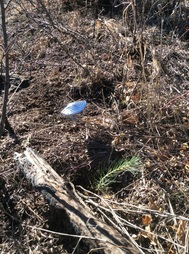|
The 2011 Las Conchas fire burned 156,593 ac (63,370 ha) on the east flank of the Jemez Mountains in northern New Mexico. While certainly not the largest fire in recent years, this particular fire burned through three areas previously impacted by wildfire. This New York Times article provides a good overview of the issues facing this particular landscape and many western landscapes in general. In the southwestern US, the area burned by wildfire has increased 1266% over the 1973-1982 average. A recent estimate suggests that climate change contributed an additional 10.3 million ac (4.2 million ha) of forest fire over the period from 1984-2015, meaning that in the absence of climate change we would have expected about 50% less burned area over that period. As a result, severely burned landscapes like the east flank of the Jemez Mountains are becoming more common. Increasing fire size and larger patches of severe fire, where the majority of trees are killed, create a challenge for reforestation. The first challenge is distance to mature trees that provide the seed for tree establishment. This challenge can be overcome by planting seedlings. However, trees modify the climate conditions at ground level. Under the canopy of a forest, the air temperature is cooler and the relative humidity is higher, making it a moister environment. These factors matter because hot, dry conditions can be lethal to seedlings. In a burned patch where all of the overstory trees have been killed, these microclimatic conditions may be too harsh for seedlings to establish. We are in the process of establishing an experiment funded by the Joint Fire Science Program to figure out how the post-fire environment influences the ability of planted seedlings to survive and grow. The post-Las Conchas fire landscape has a mix of shrub and grass cover. Our hypothesis is that shrub cover could create more favorable growing conditions for tree seedlings. To test this hypothesis, we constructed exclosures in shrub and non-shrub patches and are in the process of planting seedlings. We are instrumenting these sites with sensors that measure temperature and relative humidity at the height of the seedlings. We’ll link the temperature and humidity data with data collected at weather stations that we are deploying around the experiment. This will allow us to model how microclimate (ground level temperature and relative humidity) vary across the larger area and predict how these factors influence tree seedling survival and growth. Stay tuned for updates on this project.
0 Comments
Your comment will be posted after it is approved.
Leave a Reply. |
Details
Archives
October 2023
Categories
All
|





 RSS Feed
RSS Feed